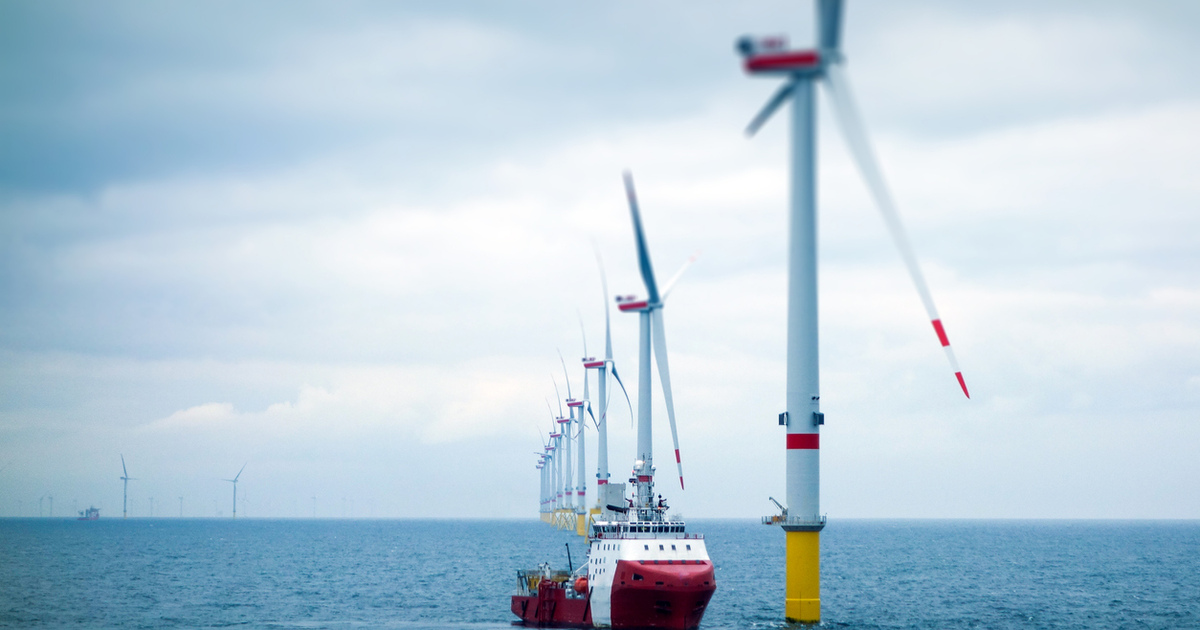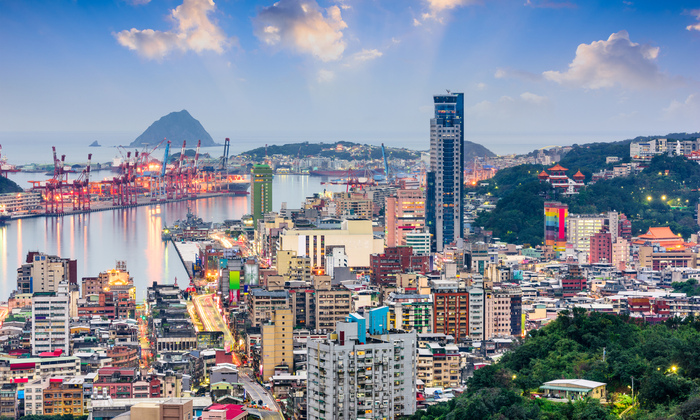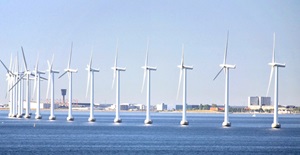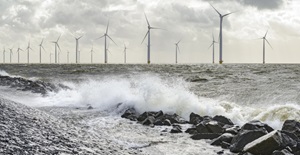Out-Law / Your Daily Need-To-Know
Out-Law Analysis 8 min. read
Taiwanese offshore wind development round 2021 underway

02 Sep 2021, 1:42 pm
Published on 19 August, the Zonal Development Round plans are largely the same as those put out by the BoE in May 2021, although greater details have now been provided. The plans address the period 2026-2035 with approximately 1.5GW of capacity to be awarded each year, a total of 15GW.
The announcement will be welcomed by bidders who were successful in earlier rounds as much as by unsuccessful bidders and potential new entrants, such as oil and gas companies looking to expand into the renewables sector, who will be even more keen to establish a foothold in one of Asia’s newest and most prolific offshore wind markets. Despite an increase in activity in Japan, South Korea and other Asian markets, the Taiwanese authorities seem determined to push hard to develop a regional hub for offshore wind – and the roll-out of the Zonal Development Round is set to support those ambitions.
Regulatory landscape of the Zonal Development Round
Since being re-elected for her second term in early 2020 the head of the Taiwanese authorities, Tsai Ing-wen, has continued to promote Taiwan's ambitious renewable energy targets. Tsai has remained committed to harnessing the potential capability of offshore wind in Taiwan, previously setting out plans to install 5.7GW of offshore wind capacity by 2025 and later announcing the installation of a further 10GW of offshore wind capacity by 2035 - now increased to 15GW as part of the Zonal Development Round. During her inaugural speech in May 2020, Tsai re-affirmed her commitment to the acceleration of green energy and renewable development when she announced her latest target: to derive 20% of overall energy from green sources by 2050, making Taiwan a centre for green energy in Asia. Market forces, and the adoption of the RE100 platform by many multinational manufacturers, are also bringing new public and private sector considerations to the fore.
The finalised plans released on 19 August provide that:
- a total of 15GW will be made available for the period 2026-2035, with 1.5GW awarded per year;
- 9GW will be connected between 2026-2031 and allocation will take place in three stages – 3GW to be connected in 2026-27 in stage 1, 3GW to be connected in 2028-29 in stage 2, and 3GW to be connected in 2030-31 in stage 3. The due date for submitting bids for each stage will be announced separately;
- the process for the remaining 6GW, to be connected from 2032-35, will be determined later, depending on the results of the first three stages.
In order to encourage diversified participation, the BoE has introduced a capacity cap for each auction in the Zonal Development Round. Specifically, the maximum capacity that may be awarded to each project, and to a single developer, will be 500MW. However, this cap may be lifted to 600MW after taking into account relevant factors such as the integrity of the wind farm, benefits of the development, domestic industrial capacity and grid-connected capacity announced by the power transmission and distribution industry.
In addition, developers which hold less than 20% of the shares of the awarded applicant must undertake not to:
- take up more than one position to serve, or assign personnel to serve, as a director or a supervisor of the awarded applicant;
- assign personnel to serve as a manager of the awarded applicant;
- control substantially the personnel, finance or business of the awarded applicant; or
- hold directly or indirectly more than 20% of the shares of the awarded applicant
before it obtains its electricity enterprise licence.
In the event of any breach of these undertakings, the BoE will have powers to confiscate the performance bond previously paid by the awarded applicant (i.e. prior to entering into the administrative contract with the BoE), or to rescind or terminate the administrative contract. The BoE will have sole discretion over the use of these powers.
Specific considerations for developers
Preliminary consents over suitable sites
Having ‘learned some lessons’ from previous rounds, the BoE is requiring that developers must first obtain consent opinions from eight authorities before being deemed eligible to bid for capacity. These include authorities responsible for aviation, radar, military control, ship safety, conservation and fishery rights. A single portal is to be designated for submitting applications, which will then be passed on to the various authorities for review and approval.
The Taiwanese authorities have engaged various departments to map out “sensitive areas” where wind farm development will be prohibited. According to local news reports, approximately half of the 38 proposed projects for the Zonal Development Round are affected by this map of sensitive areas. Selected sites cannot cover these areas or any existing wind farms or sites that have received an establishment permit, and the shortest distance between the boundaries of the sites cannot be less than 1,200 metres.

James Harris
Partner
Despite an increase in activity in other Asian markets, the Taiwanese authorities seem determined to push hard to develop a regional hub for offshore wind
The planned installation capacity of a single application cannot be less than 100MW and cannot be less than 5MW per square kilometre.
Developers must include various documents with their site planning application:
- application form;
- proof of compliance with BoE renewable energy power generation organisation announcements, handed down in accordance with article 4 paragraph 1 of the Electricity Act;
- proof of financial resources of 5% of the total investment amount;
- a description of the background to the application;
- a location map of the wind farm and the range of the boundaries and their co-ordinates;
- a layout of wind turbines and their co-ordinates;
- consent for the use of data;
- a declaration; and
- any other documents designated by the BoE.
Preliminary environmental impact assessment approval
Bidders must also obtain preliminary environmental impact assessment (EIA) approval on the projects they intend to put forward as a condition precedent to bid registration.
In the previous rounds, developers experienced a range of challenges with the EIA process including the Environmental Protection Administration’s power to veto developments, inconsistent and strict requirements and the impacts being assessed going beyond “intended environmental impacts”. Although lessons have been learned from these earlier experiences, it is unclear whether projects that have passed the EIA but not secured capacity in previous rounds will be exempt from this pre-condition - given the literal wording of the official plans, it appears the applicant is only required to submit proof of passing the EIA. Projects that have passed the EIA in the previous rounds but not secured capacity are therefore likely to be exempted from obtaining EIA approval again in order to participate in the Zonal Development Round, however, this will require further clarification by the BoE.
Two-stage bidding procedure
Once eligible, bidders are expected to take part in a two-stage bidding procedure involving:
- a qualifications review; and
- a price competition.
The qualifications review covers technical capabilities, financial ability and the bidder’s commitment to localisation. A bidder must score more than 70 points in its technical capabilities and financial ability review, score at least 10 ‘bonus’ points and satisfy a 60% local content requirement over the capacity it applies for before moving on to the next stage.
For the first three stages of allocation for the Zonal Development Round, the tariff 'ceiling' is set at NT$2.49/kWh (US$0.09/kWh), which is the weighted average of the winning bids and the capacity from the transition round of bidding. The tariff ceiling for the subsequent stages will be determined by the weighted average of the competitive price and capacity from the previous stage of bidding. The lowest tariff bid submitted below that ceiling will be given priority in terms of allocation of available capacity. In the event that any two or more bids are first equal, priority will be given on the basis of the proposed use of 'bonus point' items (see below), with the bidder obtaining the highest score given priority. If this still does not produce a clear winner, it is expected that a selection will be made at random by way of a draw between the bidders.
Strengthened localisation requirements
Local content requirements have changed multiple times since the BoE’s first draft in response to industry feedback, but remain a major issue for developers.
The details of the local content requirements were not included in the 19 August announcement, and will be announced separately. However, from draft plans announced on 29 July 2021, local content components will be categorised into 'key development' and 'bonus point' items. Points gained from the proposed use of these items will be tallied for the purposes of the qualification review stage and, if necessary, to separate first equal bids at the price competition stage.
There are 29 key development items which carry a value of between one and six points depending on the item, split into four categories: electrical equipment; submarine foundation; turbine and components; and marine engineering and design engineering. Bonus point items also fall into four categories, with points allocated depending on the item.
More items have been added to the local content requirements for the Zonal Development Round. However, local-made key development items will only need to make up 60% of the applied for capacity, instead of 100% as previously proposed, in order to give developers greater flexibility. All key development items in the marine engineering and design engineering category must be sourced locally.
New corporate power purchase agreement policy
Legislative reforms in 2017 and 2019 have resulted in gradual liberalisation of the Taiwanese power market, with a new policy now permitting a 'renewable energy based electricity generating enterprise' to engage directly with consumers without the involvement of Taipower, the public utility. In 2019, the BoE issued its first 'electricity retailing enterprise' licence to a renewable energy company, allowing it to sell renewable electricity to consumers directly. It is anticipated that more companies may participate in this field, especially with RE100 companies insisting their supply chain use ever greater sources of renewable energy.
Allowing renewable energy developers to sell electricity directly to consumers may increase profitability, as the price of selling to corporate clients with the need to purchase renewable energy might exceed the feed-in tariff (FiT) rate under the PPA with Taipower. Additionally, the terms or revenue risk may be allocated more favourably by contracting directly with multiple consumers than under a standard PPA with Taipower.
The authorities have warned that the bidding price in the Zonal Development Round is anticipated to be lower than Taipower's current average electricity selling price to consumers. The BoE has taken into consideration the possibility that developers will bid at a very low price with plans to then resell to the end consumer by entering into a corporate PPA. This area is likely to be subject to continued assessment to ensure that no unfair competition is created among bidders.
Developer concerns over the near-finalised plans
Cost competitiveness
Some developers had previously expressed concerns over the near-finalised plans announced on 29 July. Particular concerns were been raised in respect of:
- the interaction between the single wind farm/single developer capacity cap - this has been maintained in the finalised plans;
- the ‘avoided cost’ upper limit for bidding prices - this has been set at NT$2.49/kWh in the finalised plans; and
- the local content requirements - the final form of which is yet to be confirmed.
In response, the authorities have suggested that developers consider selling green power through CPPAs. However, this raises the question of whether the CPPA market has the appetite for 15GW of green power. Developers are instead calling on the authorities to trust market mechanisms and let them find feasible energy prices for Taiwan under fair and free competition.
Grid connection
At one of the earlier BoE events, a developer questioned whether there were any plans to address submarine cable interlaying or the crossing of cabling between wind farms, given that the grid in northern areas is occupied. The BoE responded that Taipower is currently working on the planning and technical assessment of grid connectivity. As such, no confirmed information on timing of grid connectivity is yet available.
We understand that the question was raised because of developers' concerns around costs and the sharing of construction fees of the grid and relevant facilities. As an aside, we note that issues around crossing into other wind farms may require negotiation with and consent from other developers. Additionally, fresh EIA considerations may need to be addressed.
In July 2021, the BoE reiterated that long-term planning around grid construction and connectivity is being carried out simultaneously, and that Taipower is currently working to enhance grid power to accommodate 15GW of wind farm capacity.
Co-written by Dr Pijan Wu, Senior Counsel, LCS & Partners.






